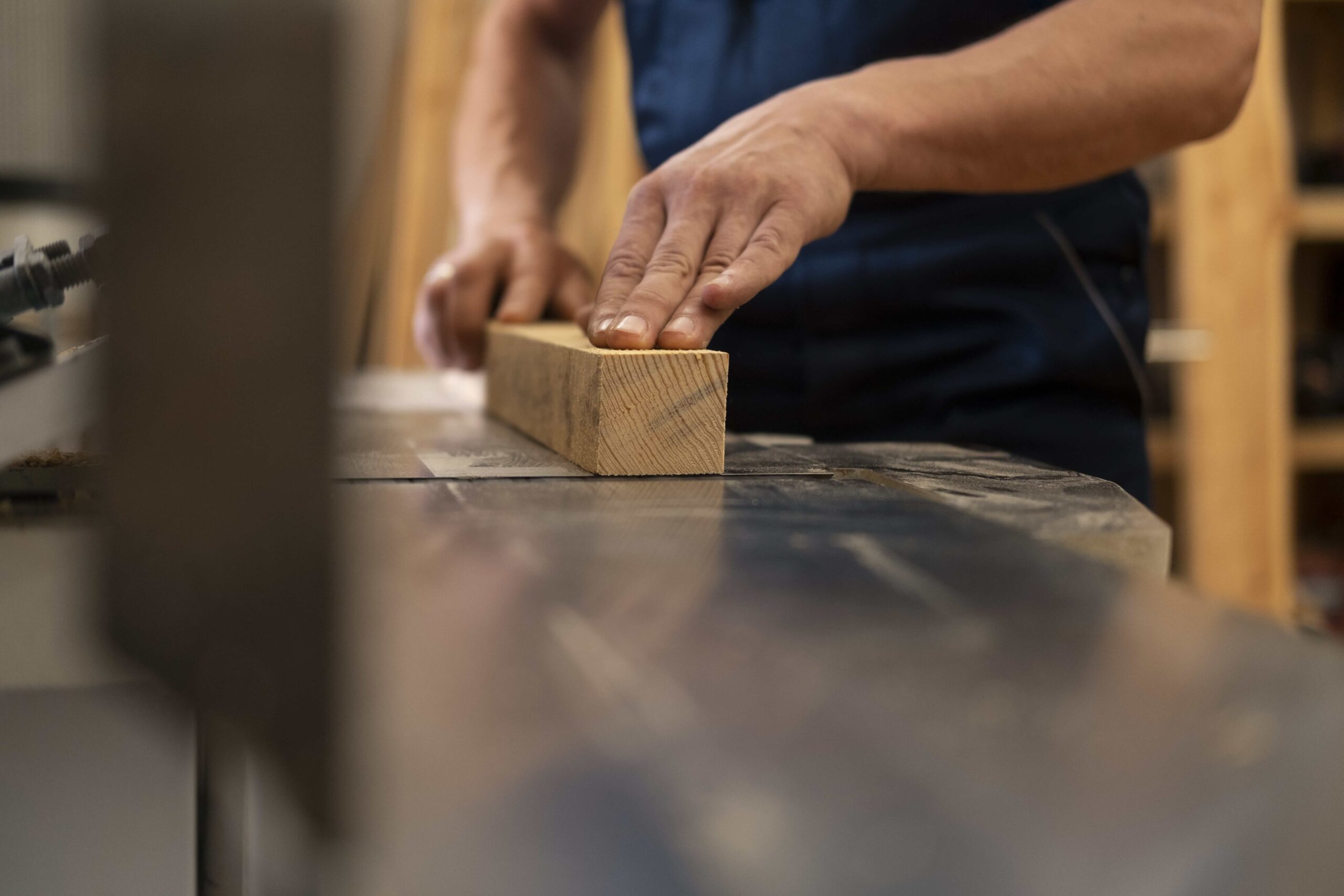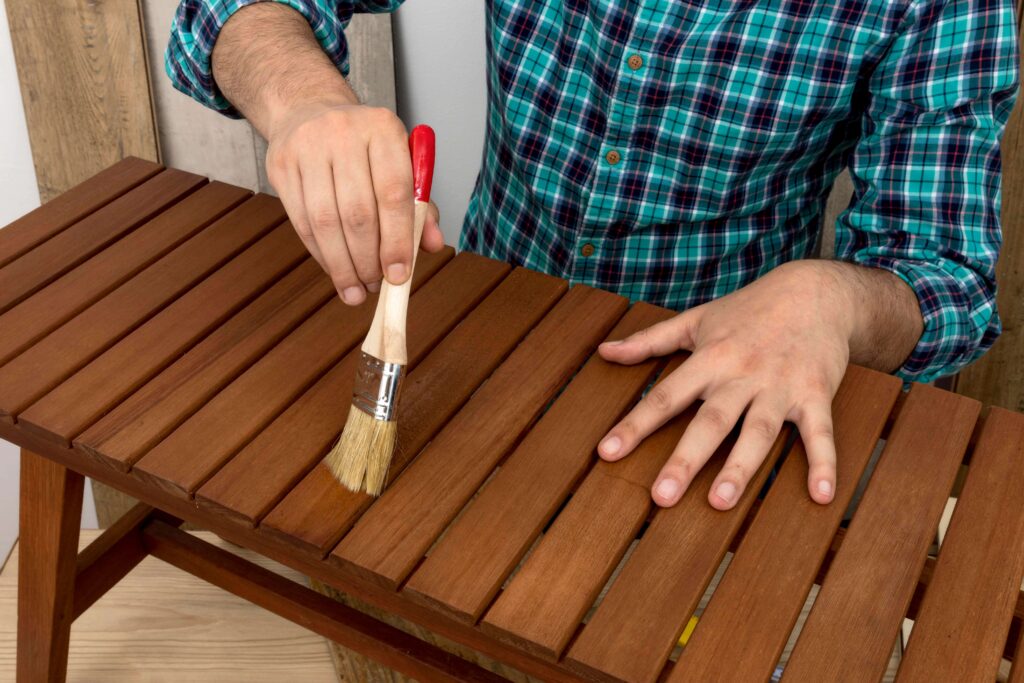
Refinishing wood furniture is the process of giving old or worn-out pieces a fresh new look. If you have a beloved wooden chair or table that looks tired, you don’t need to strip or sand it to make it shine again. Refinishing wood furniture without stripping or sanding offers an easier alternative that saves time and effort. Instead of harsh methods, you can use gel stain or other easy furniture refinishing techniques to update wood furniture, giving it a complete makeover. With a few simple steps, anyone can refresh their furniture and enjoy a beautiful wood transformation without heavy sanding. DIY furniture refinishing doesn’t have to be hard, and these furniture restoration tips will help you achieve great results.
Table of Contents
Why Refinish Wood Furniture?
Refinishing wood furniture is a great way to make your old pieces look new again without buying something new. It’s an easy and budget-friendly way to refresh your furniture. You don’t need to go through the hassle of stripping or sanding the furniture, which can save a lot of time and effort. By using a gel stain, you can easily give your furniture a new colour and look. This method is perfect for those who want to update their furniture without heavy work. A simple DIY refinishing project can quickly bring life back to your wood furniture, making it shine again. Plus, a few furniture restoration tips, like using wood cleaners or conditioners, can help smooth out small scratches or faded areas. You can finish it off with wax or varnish to protect the surface. With a few simple steps, you can give your old furniture a fresh makeover that looks like new.
Paint Stripping vs. Sanding Wood Furniture
When it comes to updating wood furniture, choosing between paint stripping and sanding can feel overwhelming. Both methods are effective, but each has pros and cons. Let’s break down these options for easy furniture refinishing, focusing on which method works best for different furniture restoration tips.
Paint Stripping Process
Paint stripping removes old paint or varnish with chemicals. This technique can be fast and efficient. If you’re looking for a method with minimal effort, no sanding furniture might be ideal. Gel stains are also commonly used to refinish wood furniture after stripping, giving it a fresh and polished look.
Advantages of Paint Stripping
One of the key benefits is that paint stripping works well on detailed areas, making it perfect for intricate wood designs. Stripping also helps you avoid the dust and physical work that comes with sanding, making it a great option for those seeking a furniture refresh without sanding.
Drawbacks of Paint Stripping
However, the chemicals used in stripping can be messy and harmful if not handled correctly. Additionally, stripping can sometimes leave residue behind, requiring additional cleaning. For those who want an eco-friendly solution, no stripping furniture might not be the best fit.
Sanding Process
Sanding is the traditional method to smooth the wood surface and remove finishes. It involves manually or mechanically sanding down the surface until the wood is bare. Sanding can be more time-consuming but offers a more detailed finish for those seeking DIY furniture refinishing.
Advantages of Sanding
Sanding offers full control over how much material is removed, which is ideal for repairing deeper scratches or damage. This method provides a smooth base, ensuring that any wood furniture makeover looks professional. It’s an excellent approach if you’re working on durable and flat surfaces.
Drawbacks of Sanding
On the downside, sanding can be physically exhausting, especially if you’re working on large pieces. Additionally, it creates dust, which can be both messy and harmful if proper safety precautions aren’t followed. Some people prefer easy furniture refinishing methods to avoid this hassle.
No Sanding or Stripping Alternatives
If neither method sounds appealing, there are alternative ways to update wood furniture. You can apply a coat of paint or a new stain directly on the old finish, making furniture restoration tips easier. Many prefer this approach as it skips the labour of stripping or sanding entirely.
When deciding between stripping and sanding, think about the condition of your furniture and the time you have. For detailed pieces, stripping is often the easiest option, but sanding works better for flat and worn-out surfaces. Use DIY furniture refinishing products to make the process easier and faster.
Both paint stripping and sanding have their advantages and disadvantages. If you’re aiming for a wood furniture makeover that looks fresh and polished, either method can work, depending on the type of wood and your patience level. However, there are also ways to refinish wood furniture without either stripping or sanding, making it possible to refresh furniture with less effort. Ultimately, the choice depends on the condition of your furniture and the type of finish you’re looking to achieve. To know more join Studyhub courses like – Diploma in Furniture Restoration & Upholstery Training, Diploma in Interior Design, Furniture Restoration and Painting, Carpentry & Joinery Mastery: Level 3 Accredited Online Diploma for Woodworking Artistry (CPD Certified).

Quick Tips for Refinishing Wood Furniture Without Stripping or Sanding
Refinishing wood furniture can feel like a daunting task, especially if you’re worried about stripping or sanding. Thankfully, there are methods to give your furniture a fresh look without all that hard work. Whether you want to update wood furniture or are looking for DIY furniture refinishing tips, here’s how you can tackle a furniture refresh without sanding or stripping.
Clean the Surface Thoroughly
Before starting, clean your furniture properly. Dust, dirt, and grime can affect how well the new finish adheres. Use a gentle cleaner or a mixture of mild soap and water. After cleaning, let the wood dry completely. This simple step is key to an easy furniture refinishing project.
Apply a Liquid Deglosser
Instead of sanding, use a liquid deglosser to dull the existing finish. This product helps you prepare the surface for new stain or paint without the need to strip or sand. Wipe it on with a cloth, and it removes the glossy top layer, making the surface ready for refinishing. Deglossing is a game-changer for no sanding furniture projects.
Use Gel Stain for a Fresh Look
Gel stain is perfect for refinishing wood furniture because it sits on top of the surface rather than penetrating like regular stains. It’s ideal for achieving a rich, updated wood furniture look. You can apply it with a rag, making the process quick and easy. Gel stain furniture techniques are great when you want a wood furniture makeover without stripping.
Touch Up with Paint or Finish
For those who prefer a painted look, chalk paint is an excellent choice for no sanding furniture makeovers. It adheres well to many surfaces without the need for extensive prep work. Apply two coats for solid coverage, then use a wax or a topcoat to seal the paint and protect the finish.
Seal the New Finish
After applying your stain or paint, don’t forget to seal your work. A clear polyurethane or furniture wax adds durability and ensures your furniture stays beautiful longer. This last step in furniture restoration tips is vital to protect the finish and make it last.
Add New Hardware for an Extra Touch
One final way to update wood furniture is by changing the hardware. Adding modern knobs or handles is a quick and easy way to give the piece a fresh look. It’s a simple detail that can elevate the overall appearance of your DIY furniture refinishing project.
Refinishing wood furniture doesn’t have to involve messy stripping or tedious sanding. By following these steps, you can achieve a stunning wood furniture makeover with minimal effort. With the right techniques and products, you can restore and refresh your furniture easily, giving it new life and style. Join Studyhub courses like – Diploma in Furniture Restoration & Upholstery Training, Diploma in Interior Design, Furniture Restoration and Painting, Carpentry & Joinery Mastery: Level 3 Accredited Online Diploma for Woodworking Artistry (CPD Certified).
What Furniture Should Not be Refinished?
When considering refinishing wood furniture, it’s essential to know that not every piece is suitable for this type of makeover. While easy furniture refinishing can give a new life to many items, some should be left as they are. Here’s a guide to help you identify which furniture pieces should not be refinished and why.
Antique or Vintage Furniture with High Value
Antique furniture can lose its value if you attempt to refinish it. Many older pieces have a unique patina, which adds character and historical significance. Stripping furniture or using gel stain furniture techniques can reduce its market value. Always consult an expert before starting any wood furniture makeover for antique pieces.
Furniture with a Veneer Finish
Veneer furniture is often made by applying a thin layer of wood over a less expensive material. Refinishing veneer wood furniture can lead to issues if you strip or sand the surface. No sanding furniture with veneer is a wise approach because sanding can damage the thin layer, making it nearly impossible to restore. Instead, consider other furniture restoration tips that don’t involve aggressive techniques.
Furniture with Lead-Based Paint
Refinishing old furniture covered in lead-based paint can be hazardous to your health. Stripping and sanding can release toxic particles into the air, making it unsafe for DIY furniture refinishing projects. In this case, you should either avoid refinishing or hire professionals who can handle the job safely.
Highly Damaged or Rotted Wood
Furniture with extensive damage, such as deep cracks or rotted wood, is not ideal for refinishing. No amount of refinishing or gel stain furniture treatment can fix structural issues. If you find that the wood is weak or unstable, it’s better to replace or repair those areas before considering a wood furniture makeover.
Furniture with Intricate Details or Carvings
Carved or intricate wood pieces can be tricky to refinish. Sanding or stripping these types of furniture can destroy the fine details, leaving the furniture looking worn and uneven. Furniture refresh without sanding may work better, using light cleaning or touch-up products instead.
Heirloom Furniture with Sentimental Value
Even if your wood furniture looks outdated, refinishing it may not always be the best choice. If the piece has sentimental value, the original look may hold more meaning than a makeover. In these cases, it’s better to focus on gentle cleaning or applying a protective layer without changing its original appearance.
Furniture with Special Coatings
Some furniture comes with special finishes, such as laminates or water-resistant coatings. These finishes are difficult to refinish because sanding or applying new coatings may not adhere well. In such cases, following DIY furniture refinishing methods could lead to peeling or uneven results. Instead, consider leaving these pieces as they are or using less invasive restoration techniques.
Before jumping into your next furniture restoration project, it’s essential to consider whether refinishing is the right choice. Not every piece benefits from a makeover, especially if it involves antique, veneer, or heavily damaged furniture. When deciding, think about the value, material, and finish. For furniture that doesn’t qualify for refinishing, focus on maintaining its condition rather than stripping it down. Following these furniture restoration tips will help you make the best decision and keep your treasured pieces in good shape.
FAQs
The best way is to clean the surface, strip the old finish, sand the wood, apply a wood stain or finish, and seal it with a protective topcoat.
Yes, if the furniture is of good quality or has sentimental value. Refinishing can restore beauty and extend the life of the piece.
In the UK, refinishing wood furniture typically costs between £80 and £400, depending on the size, condition, and type of furniture. Professional services may charge more for intricate or large pieces.
- All Courses
- IT & Software376
- Management274
- Teaching and Education247
- Business234
- Health and Fitness212
- Health & Safety158
- Engineering & Technology150
- Quality Licence Scheme137
- Health and Social Care134
- Healthcare129
- Accounting & Finance125
- Employability105
- Psychology99
- Lifestyle92
- Marketing75
- Office Productivity65
- Animal Care56
- Design and Photography53
- Design44
- Beauty & Makeup42
- Accounting & Bookkeeping34
- Web Development27
- Writing20
- Construction15
- Digital Marketing13
- Child Care10
- Environment9
- Agriculture5
- Coaching1
Awarded By






0 responses on "Quick Tips for Refinishing Wood Furniture Without Stripping or Sanding"